Deadlock Item Builds Explained: Best Builds & Item Guide
Updated On: November 12, 2025 by Aaron Connolly
What Are Deadlock Item Builds?
When we talk about Deadlock item builds, we’re talking about mixing and matching gear to make your hero stronger as the match goes on. Items come in three main flavors: Weapon, Vitality, and Spirit. Each one does something unique, and you can swap things up to fit your style or the situation.
Understanding Item Build Fundamentals
Deadlock’s item builds aren’t like what you see in most shooters. You start with 12 inventory slots, but four are locked for the item categories. So, you actually have eight open slots at first.
As you break down enemy structures, you unlock up to four more slots. That means your build gets more complicated as the game drags on.
You buy items using souls. You pick these up by taking out enemies, grabbing objectives, or just farming. Cheap items cost 500 souls, but the really wild stuff can set you back 6,300.
Here’s how builds usually go:
- Start with cheap, basic items (500-1,000 souls)
- Add stronger stuff when you have more souls
- Go for the expensive, game-changing upgrades (3,000+ souls) as you close in on the late game
Higher tiers give you bigger stat boosts, but you’ll pay through the nose. A Basic Magazine at 500 souls gives you 24% more ammo, but its upgrade, Titanic Magazine, gives 100% more—at seven times the price.
Why Item Choices Matter in Deadlock
Picking the wrong items can throw a match, even if your aim is on point. Deadlock’s item system has a huge impact on your damage, how long you last in fights, and what tricks you can pull off.
Different enemies need different counter strategies. Say you’re up against a Wraith who loves Telekinesis for sneaky attacks—grab something like Reactive Barrier or Metal Skin to soak up more damage. If Vindicta keeps flying around, Knockdown items can drop them to the ground.
When you buy items matters, too:
- Early items give nice percentage boosts but eat up your slots
- Late-game gear packs real punch and wild effects
- Counter items can shut down enemy plans
You can always peek at what your opponents are building—just hit Tab—and swap your build on the fly.
After you die, the game shows exactly what took you out. This info makes it easier to pick the right defensive items next time.
Key Terminology: Weapon, Vitality, and Spirit Items
Those three categories—Weapon, Vitality, and Spirit—aren’t always as obvious as they sound. Each one has a main focus, but the extras can really mix things up.
Weapon Items aren’t just about raw damage. They might make you reload faster, speed up your bullets, or just handle your weapon better. Think Active Reload for quicker reloads or Hollow Point Ward for more damage.
Vitality Items help you survive and sometimes help your team, too. They boost your health, speed up your healing, or give you shields. Healing Rite keeps you going, and other vitality items can block damage or reduce what you take.
Spirit Items are all about amping up your abilities and adding cool effects. They boost ability power, cut down cooldowns, or give you unique actives. Some heroes—like Haze—really shine with spirit items.
A lot of items do similar things but sit in different categories. For example, Active Reload and Quicksilver Reload both help with reloads but come from different slots, so you’ve got options when your inventory fills up.
Core Components of Item Builds
Deadlock’s item system splits into three main categories that shape your hero’s role and what you can actually do. Weapon items crank up your shooting, vitality items help you stay alive, and spirit items make your abilities pop.
Weapon Items: Boosting Damage Output
Weapon items push your gun damage higher and make combat feel smoother. They affect your basic shots and any abilities that use your weapon.
Basic Magazine is just 500 souls and bumps up your ammo. If your hero chews through bullets, you’ll want this early.
Active Reload costs 1,250 souls but pays off if you nail your reload timing. It gives you a fast reload and a firing rate boost—super handy for heroes like Haze who reload slowly.
Ammo Scavenger gives ammo back when you secure or deny orbs. If your hero needs lots of bullets for objectives, this can double your ammo in big fights.
Late-game weapon items get wild. Improved Bullet Armour is pricey but gives you 45% bullet resistance. Suddenly, you’re a lot harder to take down with weapons.
Vitality Items: Enhancing Survivability
Vitality items are all about keeping you in the fight longer. As enemy damage ramps up, these become more important.
Combat Barrier gives you a shield and a damage boost while it’s up. It’s great for early scuffles when you need to stay alive.
Bullet Life Steal lets you heal by dealing weapon damage. It means you can fight longer without running back to base.
Debuff Reducer and Debuff Remover help you shrug off crowd control. Against teams with heroes like Warden or Seven, these can save your skin.
Improved Spirit Armour gives you 45% resistance to spirit damage when things get serious. Pick bullet or spirit resistance depending on what hurts most.
Enchanted Barriers are like combat barriers but block spirit damage instead.
Spirit Items: Amplifying Abilities
Spirit items boost your ability damage and effects, but not every hero needs them. Know your hero’s scaling to make the right call.
Mystic Burst gives more ability damage when your skills hit hard—over 80 damage. It also adds weapon damage, so it’s nice for hybrid builds.
Extra Charge hands out another use of important abilities to heroes like McGinnis or Talon. That can totally flip a team fight.
Spirit scaling isn’t the same for everyone. Pocket’s abilities barely scale with spirit power—his main attack and ultimate only get a 1.4 boost. Talon’s arrow, though, starts at 1.6 and goes up to 2.5 late game.
Look at actual scaling numbers, not just how a hero looks. Some “mage” types actually do better with weapon or vitality gear.
Spirit Life Steal works like bullet life steal but for ability damage.
Optimising Weapon Item Builds
Weapon builds are all about squeezing out as much gun damage as you can. You want items that boost your numbers, keep you topped up with lifesteal, and let you shoot longer with better ammo. The trick is finding a balance between raw firepower and things like reload speed or bullet penetration.
Best Items for Weapon Damage
Monster Rounds and Hollow Point Ward are pretty much staples for weapon builds. Monster Rounds gives +15% weapon damage and +7% bullet lifesteal, which is awesome for early game pressure.
Hollow Point Ward adds +11% weapon damage and +75 bullet shield health. Honestly, you should just grab both on your first shopping trip.
High-Velocity Mag is a must for mid-range shooting. It bumps bullet speed by +20% and adds +12% weapon damage, making it easier to hit moving targets.
For late game, Lucky Shot can really turn things around. It gives +25% weapon damage and a shot at crits. Sure, it’s random, but if you’re already ahead, it snowballs hard.
Glass Cannon piles on the damage—+70 weapon damage—but drops your health. Only pick this up if your team can keep you safe.
Here’s a quick priority table:
| Game Stage | Core Items | Damage Boost |
|---|---|---|
| Early | Monster Rounds, Hollow Point Ward | ~26% weapon damage |
| Mid | Add High-Velocity Mag | ~38% weapon damage |
| Late | Lucky Shot or Glass Cannon | 50%+ weapon damage |
Effective Use of Bullet Lifesteal
Bullet lifesteal is what keeps you standing in long fights. Most builds need at least 15-20% to really work.
Monster Rounds starts you off with 7%. It’s enough for basic sustain in lane and helps most when you’re fighting jungle creeps or trading hits.
Vampiric Burst is clutch for teamfights. It gives +20% bullet lifesteal, +125 health, and an active heal for 35% of your damage over 6 seconds.
Leech is the top-tier lifesteal item, at +35%. It’s expensive, so only carries who are rolling in souls should grab it. The healing really kicks in when you’re fighting multiple enemies.
Siphon Bullets is nice for ranged heroes. It adds +20% lifesteal and slows whoever you hit, so you get sustain and a bit of crowd control.
Don’t just stack lifesteal for the sake of it—you need enough damage to make the healing count. Lifesteal with no damage won’t save you in a brawl.
Managing Ammo and Firing Rate
Running out of ammo mid-fight is the worst. Ammo Scavenger helps early by giving +20% ammo and +15% reload speed.
Basic Magazine boosts your clip size by +24% and adds weapon damage. Bigger clips mean fewer reloads when things get heated. If your hero has a tiny magazine, grab this.
Rapid Rounds bumps up your firing rate by +17% and gives extra ammo. You’ll shoot faster, but you’ll also run dry quicker.
Quicksilver Reload speeds up reloads by +40% and boosts fire rate. It’s perfect for heroes who are always reloading.
Tesla Bullets adds chain lightning to your shots and +8% fire rate. Bullets jump between enemies, so your damage spreads out in group fights.
For ammo builds, try this:
- Grab Ammo Scavenger if you’re always running low
- Add Basic Magazine for longer skirmishes
- Use Quicksilver Reload if reloads slow you down
- Pick Tesla Bullets against clumped-up teams
Just remember, shooting faster is useless if you have to reload every couple of seconds.
Building for Survivability
Staying alive in team fights is all about picking the right mix of items. You want to stack up your health with vitality items, then layer on shields and resistances, and find ways to shorten debuffs.
Maximising Health with Vitality Items
Vitality items are the heart of any survival build. They pump up your health, so you can take a few hits without panicking.
Fortitude is the go-to early on. It gives you a solid health boost, and honestly, almost every hero should grab it in their first few buys.
Enchanter’s Barrier gives you health and spirit resistance, so it’s a lifesaver against teams that throw a lot of ability damage. It gets more important as spirit-based heroes start scaling.
Colossus is the big-ticket health item. It gives you a chunk of health but costs a lot. Save it for late game when you really need to soak up damage.
Build based on what’s hurting you most. If enemies hit hard and fast, stack up health first. If they wear you down slowly, mix in resistances for better value.
Utilising Shields and Resistances
Shields and resistances can really stretch out your health pool. They kick in before damage even hits your health bar, so you end up taking less overall.
Metal Skin blocks a chunk of incoming damage, but only for a short time. Pop it when you know you’re about to get focused or when fights are about to break out.
You have to time Metal Skin right to get the most out of it. It’s easy to waste if you panic.
Pristine Emblem gives you steady spirit resistance. This one’s great against teams that rely on ability damage.
You don’t need to think about activating Pristine Emblem, so it’s one less thing to worry about mid-fight.
Bullet Armour cuts down weapon damage from enemy heroes. If you’re up against someone like Vindicta or other weapon-heavy carries, grab this.
Stacking a few sources of resistance can help a lot.
Mix up your resistances for a more balanced defense. If you just stack health, you’ll get wrecked by percentage-based damage and big abilities.
Debuff Reduction Strategies
Debuff reduction lets you break free from danger faster. Crowd control is usually a death sentence, so reducing it is a big deal for staying alive.
Debuff Reducer shortens all negative effects—stuns, slows, damage-over-time, you name it. Heroes like Seven or Paradox will hate you for having this.
Unstoppable makes you immune to crowd control for a bit. Save it for those moments when you absolutely have to get away or keep fighting.
Timing Unstoppable right can flip a whole team fight.
Healing Rite gives you health back over time. Use it between fights to stay topped up.
It’s not great against burst damage, but in long, drawn-out scraps, it shines.
Pair debuff reduction with movement items for even better escapes. Mobile heroes especially love this combo, since they can reposition fast once they’re free.
Integrating Lifesteal into Builds
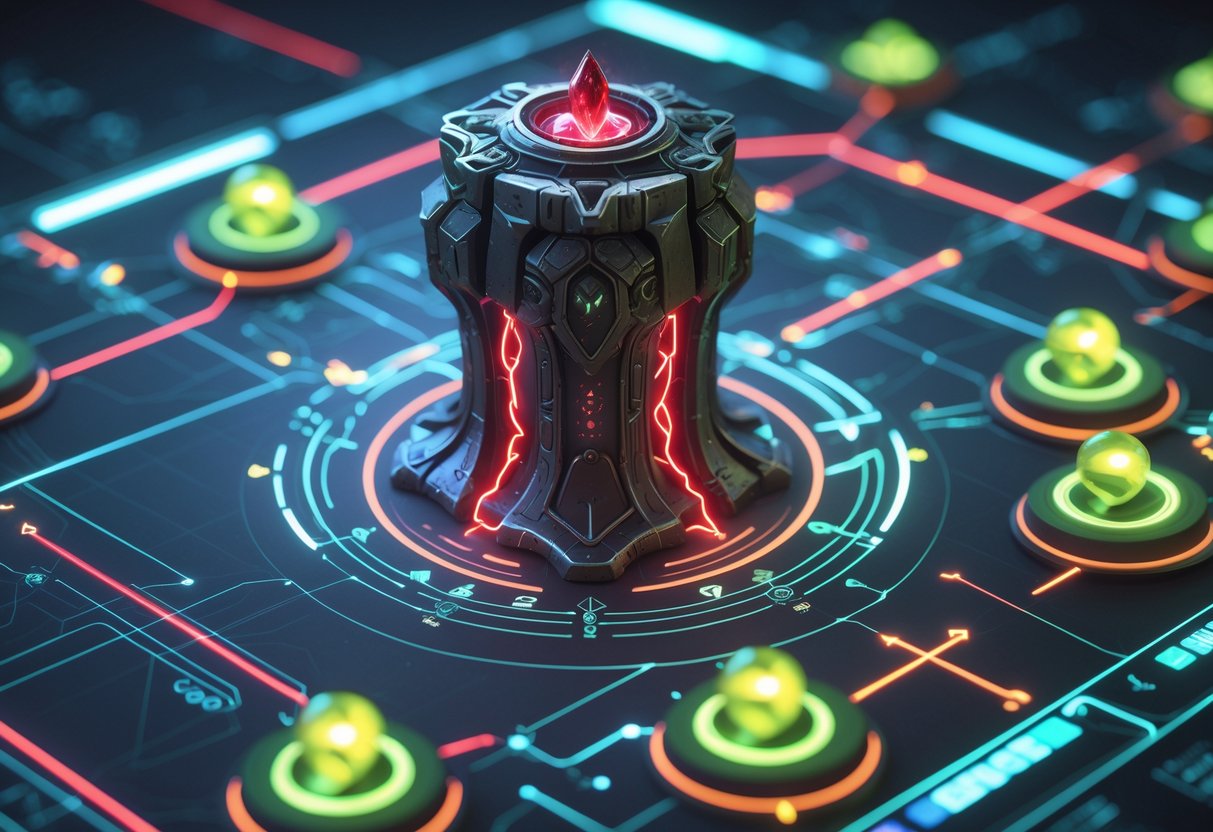
Lifesteal can totally change your Deadlock matches by giving you the sustain you need in fights. Bullet lifesteal and spirit lifesteal work in different ways, and both have their own strengths depending on who you’re fighting.
If you build the right items together, you’ll stick around longer in every skirmish.
Bullet Lifesteal vs. Spirit Lifesteal
Bullet lifesteal gives you health back based on the weapon damage you deal. Shoot for 100 damage with 26% bullet lifesteal? You get 26 health instantly.
Spirit lifesteal is the same idea, but it only works on the spirit damage from your abilities. This one’s a lifesaver for heroes who spam skills instead of basic attacks.
There’s a catch with creeps, though. Bullet lifesteal only gives you 60% healing against non-hero units, and spirit lifesteal drops to 40%.
When you stack multiple lifesteal items, they multiply—not add. So, the more you stack, the less you get from each extra item.
| Lifesteal Type | Best For | Creep Effectiveness | Top Items |
|---|---|---|---|
| Bullet | Gun-focused heroes | 60% | Active Reload, Leech |
| Spirit | Ability-heavy heroes | 40% | Spirit Lifesteal, Mystic Reverb |
Synergy with Weapon and Ability Items
You’ll get the most out of bullet lifesteal if you pair it with fire rate and damage items. The more damage you pump out, the more you heal.
Active Reload gives you both reload speed and 18% bullet lifesteal. That combo means you’re shooting and healing more often.
Spirit builds work best when you combine spirit lifesteal with spirit power items. More ability damage equals more healing from your lifesteal.
Think about your hero’s playstyle before picking lifesteal. Abrams, for example, thrives with bullet lifesteal during close-range brawls.
Item timing makes a difference. Early lifesteal like Bullet Lifesteal (1,600 souls) keeps you going in the early game, while Leech (6,400 souls) is a huge boost in the late game.
Sustain Strategies for Prolonged Fights
During long laning phases, lane sustain matters a lot. Even a single bullet lifesteal item lets you hang around in lane without running back to base.
Focus on steady damage output instead of big bursts if you’re building for lifesteal. Consistent hits mean more reliable healing.
When you’ve got lifesteal, you can play a bit more aggressively in team fights. You’ll heal as you fight, but still, don’t go too deep too early.
Mix lifesteal with resistance items for the best survival. Healing 30% of your damage while taking 20% less? That’s a tough combo to break.
Creep farming is easier with bullet lifesteal since you stay healthier while clearing waves. Just remember, it heals less against creeps, so don’t get overconfident.
Try to line up big fights when your lifesteal items are ready. Heroes with strong lifesteal can outlast opponents in duels that would otherwise be risky.
Powering Up with Spirit Items
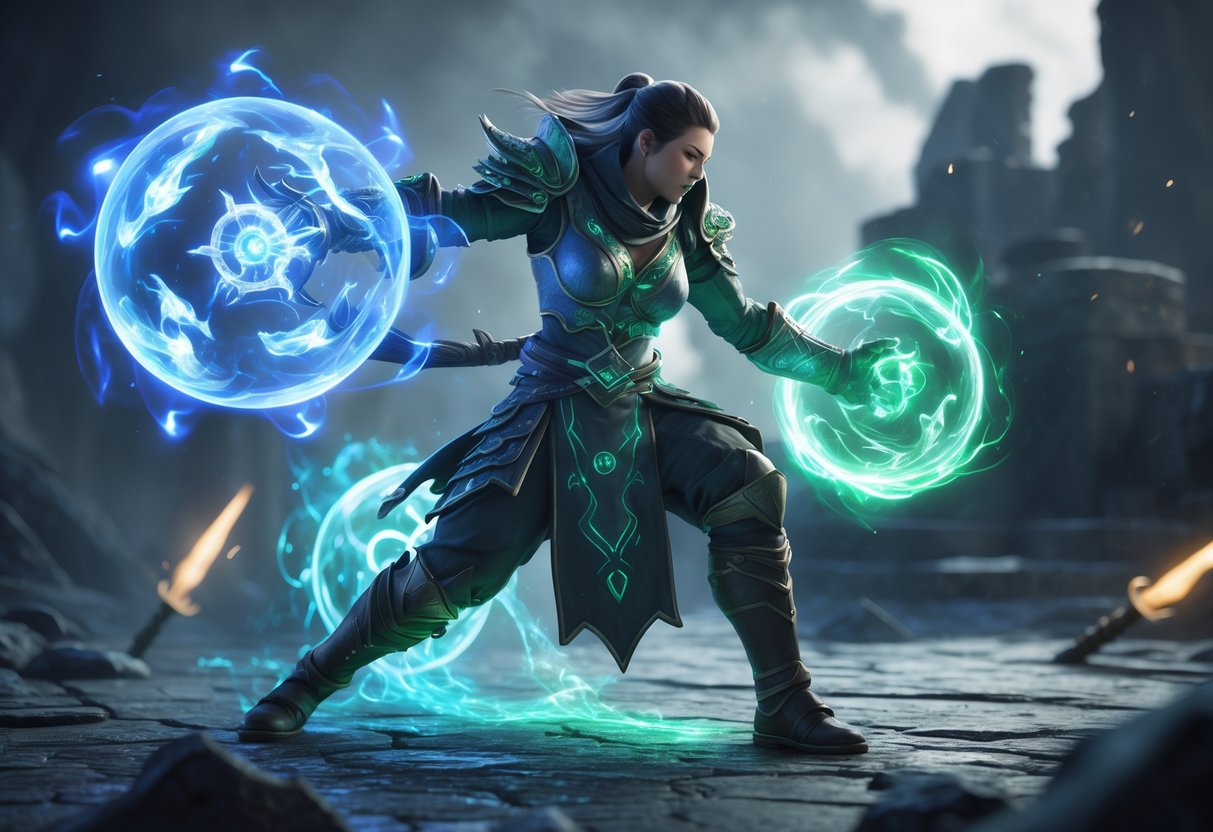
Spirit items take your abilities from “meh” to “wow.” Upgrading from Improved Spirit to Boundless Spirit gives you a clear path, and cooldown reduction items let you spam your skills way more often.
Improved Spirit: Effects and Usage
Improved Spirit anchors most spirit builds in Deadlock. It’s a Tier 3 upgrade with 30 Spirit Power, 3 health regeneration, 1m/s sprint speed, and 125 bonus health.
You’ll pay about 3,000 souls, building it from Extra Spirit. If your hero relies on ability damage, you want this upgrade early.
Improved Spirit really shines on heroes who scale with spirit power. If you’ve got multiple damaging abilities, you’ll notice the power spike.
Pick up Improved Spirit as you move into mid-game. The health regen keeps you in lane, and the spirit power makes your skills hit a lot harder.
Boundless Spirit and Its Advantages
Boundless Spirit is the top-tier spirit power item in Deadlock. It’s a Tier 4 with 65 Spirit Power—nothing else matches it.
You also get 300 bonus health, 15 health regen, 30% weapon damage, and 2m/s sprint speed. It’s pricey, though, at over 6,200 souls.
Once you’ve got Boundless Spirit, your late-game team fights feel totally different. Your abilities just melt enemy teams.
Only go for Boundless Spirit if you’re ahead or the match is dragging into late game. It’s expensive, so don’t rush it at the cost of other important gear.
Reducing Cooldowns with Spirit Items
Cooldown reduction items let you cast abilities more often. Improved Cooldown gives you 14% cooldown reduction for 1,250 souls, which is a pretty solid deal.
Superior Cooldown bumps that up to 24% for non-imbued and 32% for imbued abilities. Imbued abilities (the ones you enhance) get the bigger reduction.
Rapid Recharge is a bit different. Instead of cutting cooldowns, it gives you two extra charges and 45% faster recharge between uses.
Mixing cooldown items works, but remember, the reductions stack with diminishing returns. Sometimes it’s smarter to combine cooldown and charge-based items than just piling on cooldown reduction.
Tailoring Builds for Different Heroes
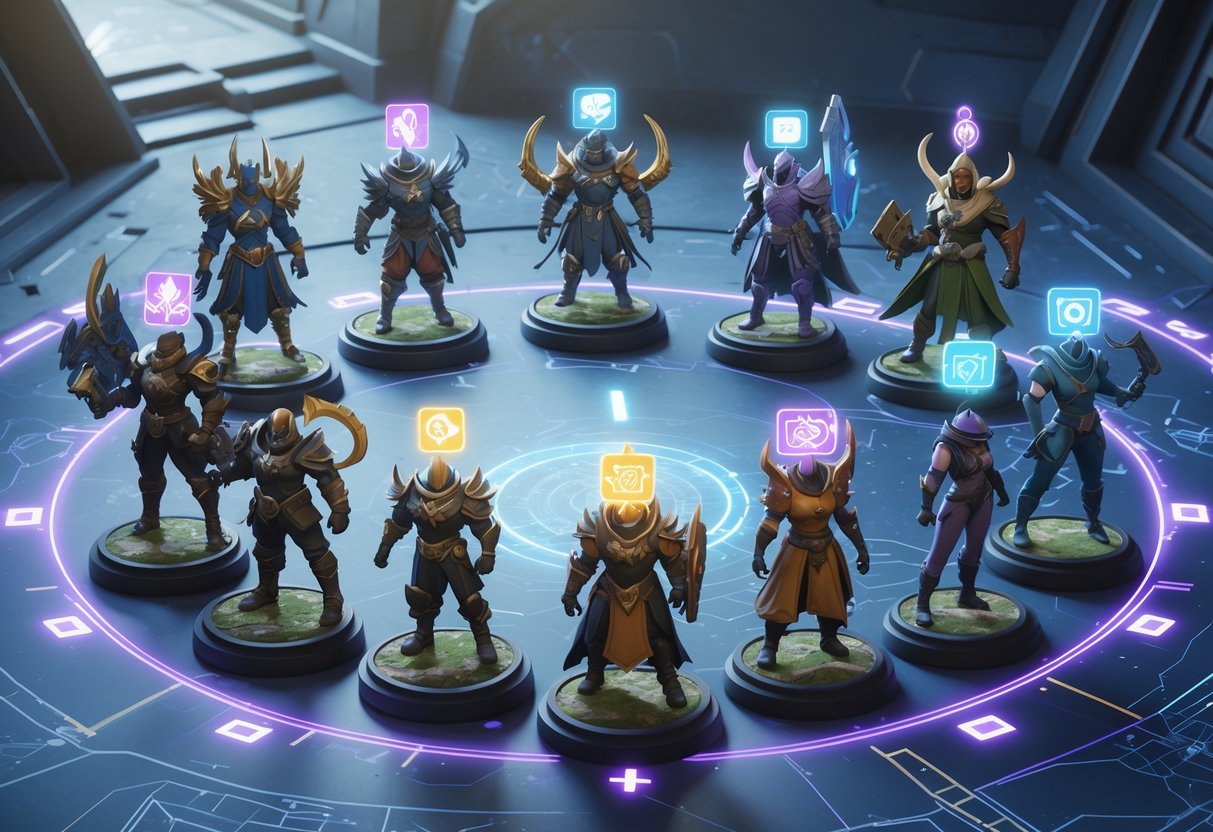
Every hero in Deadlock needs a different build, depending on their role and what their abilities do. Your item choices should match whether you’re dishing out damage, soaking up hits, or filling gaps in your team’s lineup.
Offensive Heroes: Maximising Damage
Heroes like Vindicta, Haze, and Seven should focus on weapon damage first. Start with basic damage items early on.
Ranged damage dealers want Long Range, High-Velocity Mag, and Headshot Booster early. These help you hit harder and from safer spots.
For close-range fighters like Abrams, grab Close Quarters and Melee Lifesteal. Lifesteal helps you survive longer in brawls.
Mid-game scaling kicks in after about 15 minutes. Items like Glass Cannon and Burst Fire crank your damage up a notch.
| Hero Type | Early Priority | Mid-Game Focus | Late Game Power |
|---|---|---|---|
| Snipers | Range + Headshots | Burst damage | Glass Cannon |
| Brawlers | Lifesteal + Close damage | Survivability items | Point Blank |
| Casters | Spirit power | Cooldown reduction | Mystic Reverb |
Heads up: Glass Cannon makes you super squishy. Only buy it if your team can keep you safe.
Defensive Heroes: Surviving Team Fights
Tank heroes like Warden and Dynamo focus on health and resistances. If you stay alive, your team has a much better shot at winning fights.
Start with Extra Health and basic armour for early survivability.
Snag Bullet Armor and Spirit Armor as you move into mid-game. Most incoming damage will be from one of those sources.
Late game, upgrade to Improved Bullet Armor and Improved Spirit Armor for percentage-based damage reduction.
Pick up Healing Booster if you’re expecting long fights. It boosts all healing you get from teammates and items.
Colossus and Unstoppable stop enemies from locking you down when things get intense.
Hybrid Builds for Versatility
Some heroes, like Ivy and Paradox, can flex their builds. This makes them super valuable in lots of situations.
Start with flexible items like Extra Health and Extra Spirit. They work for both damage and survivability.
At around 10 minutes, check what your team needs. If you’re lacking damage, go for spirit items. If you’re getting melted, stack health and resistances.
Weapon damage hybrids work on heroes with good basic attacks. Mix offensive items with a couple of defensive ones.
Lifestrike and Vampiric Burst are great for hybrids, since they give you both damage and sustain.
Quick tip: Look at your team composition at hero select and plan your build based on what your squad is missing.
Adapting Builds to Enemy Compositions
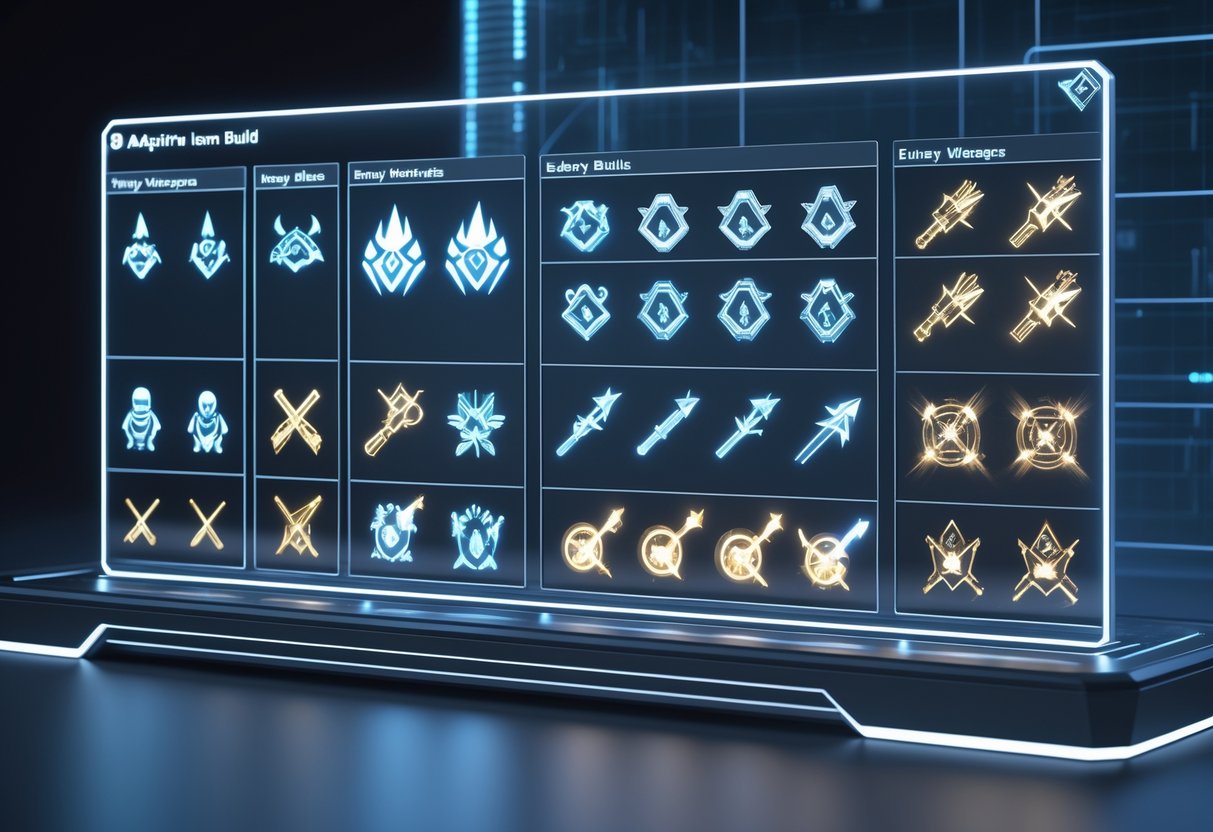
Adapting your build is all about countering what the enemy team brings. You’ll want defensive items for high weapon damage, crowd control resistance for debuff-heavy teams, and utility picks to exploit enemy weaknesses.
Countering High-Damage Opponents
When the enemy has heavy hitters like Wraith and Vindicta, grab Improved Bullet Armour ASAP.
Return Fire is awesome against these heroes. It bounces weapon damage back while you take less.
If you’re facing spirit-heavy enemies like Seven or Lady Geist, pick up Improved Spirit Armour early. Don’t wait until they’re too strong.
| Enemy Type | Core Counter Items | Situational Picks |
|---|---|---|
| High Weapon Damage | Improved Bullet Armour, Return Fire | Titanic Magazine |
| Spirit Damage | Improved Spirit Armour, Debuff Reducer | Reactive Barrier |
| Mixed Damage | Fortitude, Escalating Resilience | Monster Rounds |
Ricochet is a must-have against teams with lots of weapon damage. It scales well into late game and gives instant value.
Siphon Bullets helps you stay in fights against poke comps. The extra health regen is a lifesaver.
Surviving Crowd Control and Debuffs
Against teams with heavy crowd control—think Seven, Ivy, or McGinnis—Debuff Reducer is a lifesaver. It cuts down stuns and slows so you can actually move.
Unstoppable gives you total immunity to crowd control for a short time. Save it for big fights or when you’re the main target.
For specific debuff threats, try these counters:
- Silence Glyph for ability-heavy teams
- Slowing Hex versus mobile heroes like Lash
- Toxic Bullets if you’re up against heavy healers
Escalating Resilience builds up resistance as you take hits. It’s perfect for team fights where you’re getting focused.
Improved Burst can save you against burst-heavy enemy comps. The extra damage reduction might just keep you alive when it matters.
Flex Picks for Utility
Utility items let you poke at enemy weaknesses while still backing up your team’s plan. Hunter’s Aura punishes isolated enemies and fits nicely against split-push comps.
Crippling Headshot shreds both spirit and bullet resistance. It’s great if your team deals mixed damage.
Alchemical Fire throws weapon damage debuffs on multiple enemies. Try it against weapon-heavy teams to slow them down.
Echo Shard stretches out crowd control effects. If you run a hero like Seven, you can pull off some nasty combos.
Warp Stone gives you mobility against slow, methodical teams. Use it to dive the backline or just get out when things go sideways.
Pick up Refresher on ability-heavy heroes when facing drawn-out enemy comps. The cooldown reduction keeps you in the fight longer.
Mystic Reach lets you poke from further away. Teams that kite or love to keep their distance really hate this one.
Monster Rounds and Late Game Strategies
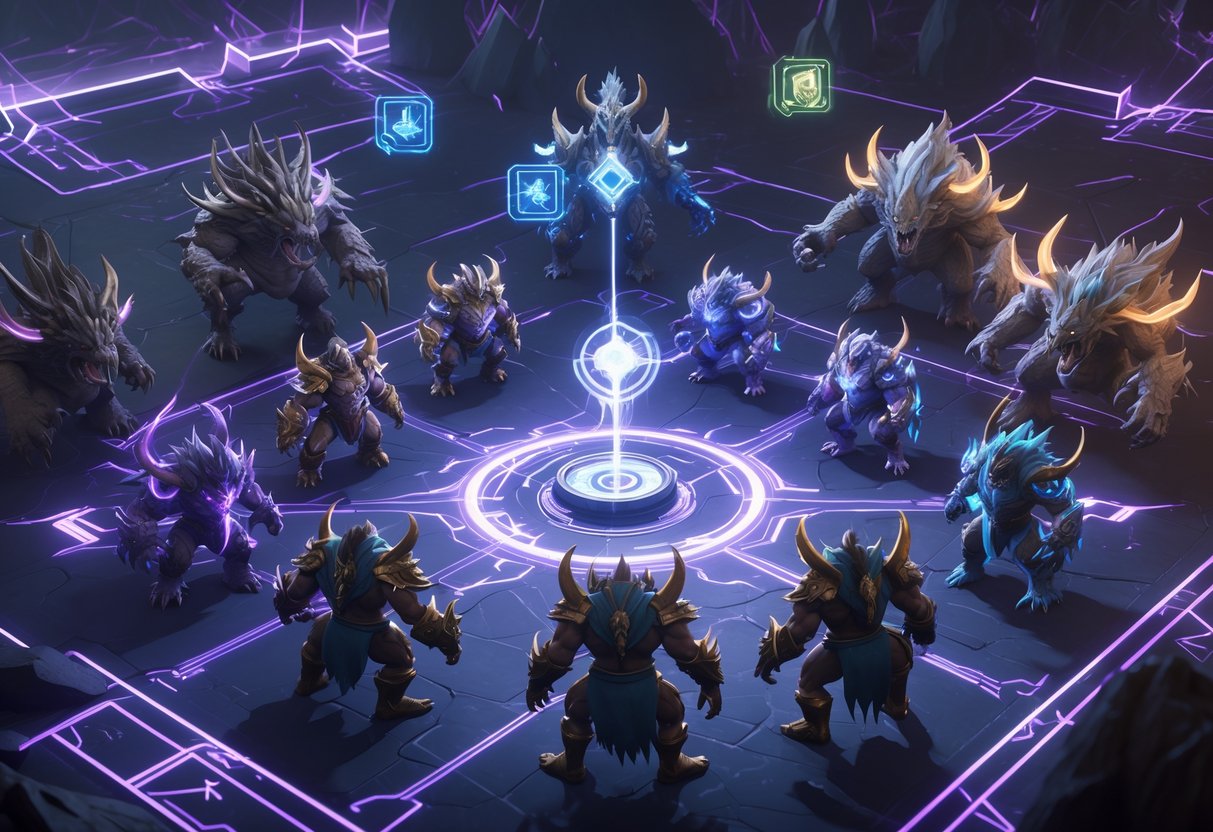
Monster Rounds acts as a bridge item that speeds up your soul farming and brings some extra punch against NPCs. Knowing when to shift from early farm to endgame builds really shapes how much you matter in big team fights.
Preparing for Monster Rounds
Grab Monster Rounds early if you need to speed up soul gain. That 800-soul spend pays off fast by helping you clear Denizen camps and Trooper waves.
The item gives you out of combat regen and more weapon damage against NPCs. It feels especially good on heroes who struggle to farm early or need to catch up.
Key timing tips:
- Buy it after your core laning items
- Prioritise if you’re behind on souls
- Must-have for heroes with weak early clear
Monster Rounds also gives you bullet resistance versus NPCs. That extra tankiness keeps you healthy while farming or pushing.
Players often miss its value against Guardians and spirit-resistant Walkers. The bonus damage helps you secure those juicy objectives.
Heads up: Sell Monster Rounds as you hit mid-to-late game, when every inventory slot starts to matter.
Best Endgame Item Combinations
Late game is all about finding the right item synergies. We usually break it down into three main groups: damage amplification, survivability, and utility.
Damage combos to try:
- Cultist Sacrifice (from Monster Rounds) with high-damage actives
- Tesla Bullets plus weapon scaling items
- Spirit amp for casters
You need to stay flexible. If the enemy stacks spirit damage, focus on bullet resistance and health.
Slot management gets tricky in late game. Sell off stuff like Healing Rite, Melee Lifesteal, and Monster Rounds to make room for the big-ticket actives.
Late-game priorities:
- At least 20-30% more damage
- Resistances or health for survival
- Utility actives for team fight control
Think about how your hero scales. Weapon-based heroes want a different path than spirit casters.
Scaling Builds for Late Game Power
Late-game scaling is all about timing your spikes and knowing when to swap out items. We see three main scaling patterns based on hero type.
Weapon scalers want items that push their basic attacks and abilities higher. Monster Rounds helps you farm up to those big weapon items.
Spirit-based heroes usually use Monster Rounds as a temporary boost, then rush pure spirit amp once they can afford it.
Transition tips:
- Sell farming items around 15,000-20,000 souls
- Go for survivability if the match is close
- Rush damage if you’re ahead
Stay flexible—rigid builds rarely work late game. Great players adapt to the enemy comp and the current match state.
Quick win: Learn your power spikes compared to the enemy. That tells you when to fight or just keep farming.
Keep an eye on your damage and how fast you die. If you’re getting melted even with expensive items, swap to defense before chasing more damage.
Situational and Luxury Item Choices
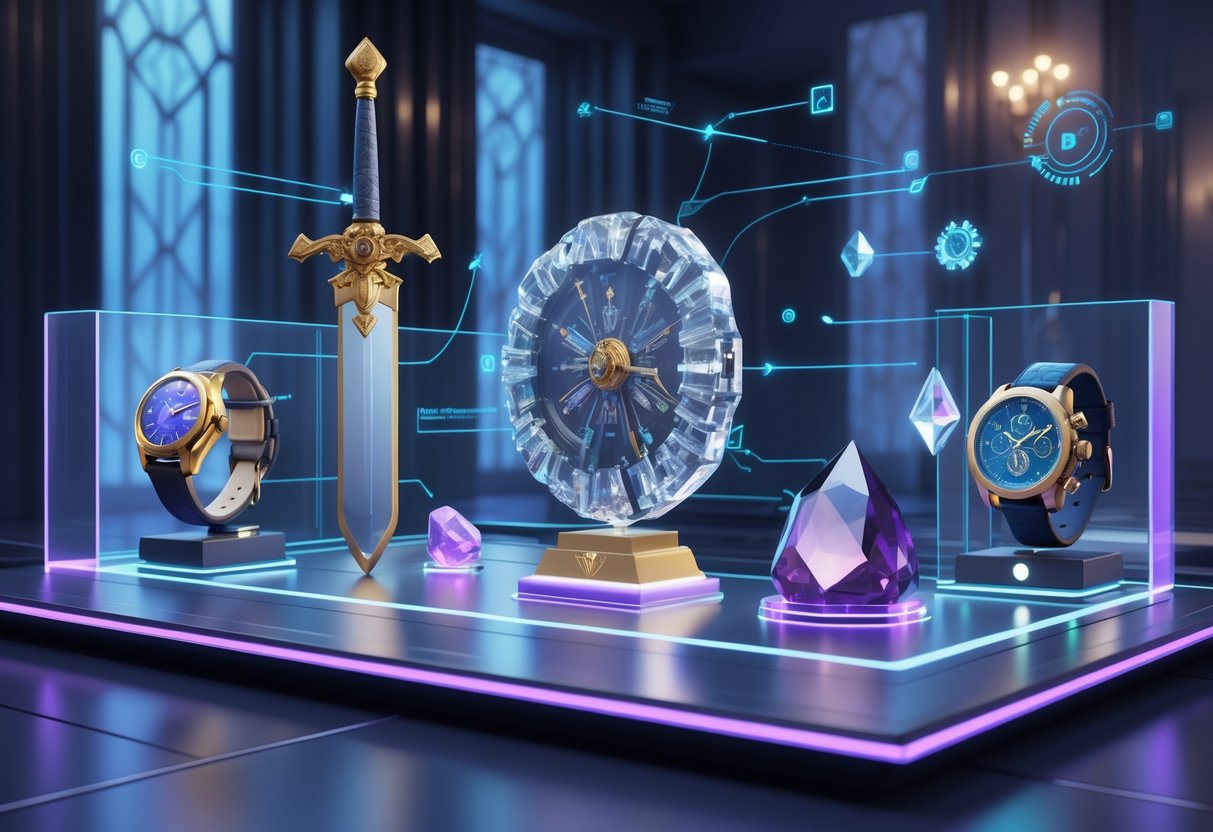
Smart item choices mean more than just following a build. You need to adapt to the match, watch your gold, and manage your inventory.
When to Buy Specific Items
Debuff Reducer and Debuff Remover shine against heavy crowd control from heroes like Warden or Seven. These can flip a team fight by cutting or removing negative effects.
Combat Barrier is your go-to for early aggression. It gives you a shield and a damage bump while it’s up.
Improved Spirit Armor and Improved Bullet Armor pack 45% resistance to their damage types. Grab them if the enemy stacks one kind of damage.
Active Reload is all about timing. It gives instant reloads and a fire rate buff, especially strong on heroes like Haze.
Extra Charge is a must for heroes like McGinnis (turrets) or Grey Talon (arrows). You get back-to-back ability casts for a huge damage spike.
Mystic Burst boosts ability damage over 80 and gives weapon damage, making it a favorite for hybrids like Pocket.
Adapting Builds Mid-Match
Keep an eye on what the enemy buys. If they’re stacking spirit damage, swap in spirit resistance and ditch your original plan.
Watch which enemies are getting fed. A strong Haze calls for different items than a weak one.
Ammo Scavenger is great if fights keep breaking out over orbs. It can double your mag size in those scrappy games.
If you’re falling behind, shift from offense to defense. Bullet Life Steal and Spirit Life Steal keep you in fights longer.
Check your team comp too. If your tank isn’t holding up, maybe you need to buy more defense than you wanted.
Sometimes, delaying a luxury item to counter the enemy wins more games than rushing your dream build.
Managing Gold and Inventory Space
Tier 1 items (500 souls) give you a nice start but need to go later. Don’t cling to early buys—upgrade when you can.
Plan your upgrade paths before spending big. Tier 2 items (1,250+ souls) are a commitment, so think ahead.
Quick win: Always check if your item builds into something better. Some Tier 1s upgrade, saving you space.
Luxury items like high-tier armor give massive spikes but cost a ton. Only buy them if you’re ahead or need the defense right now.
Warning: Don’t just sit on gold waiting for the perfect item. Small upgrades often win more fights than saving forever for something ideal.
Sell situational items when they’re no longer useful. If you bought early CC resistance but the fights change, swap it out for something better.
Experimenting with Custom Item Builds
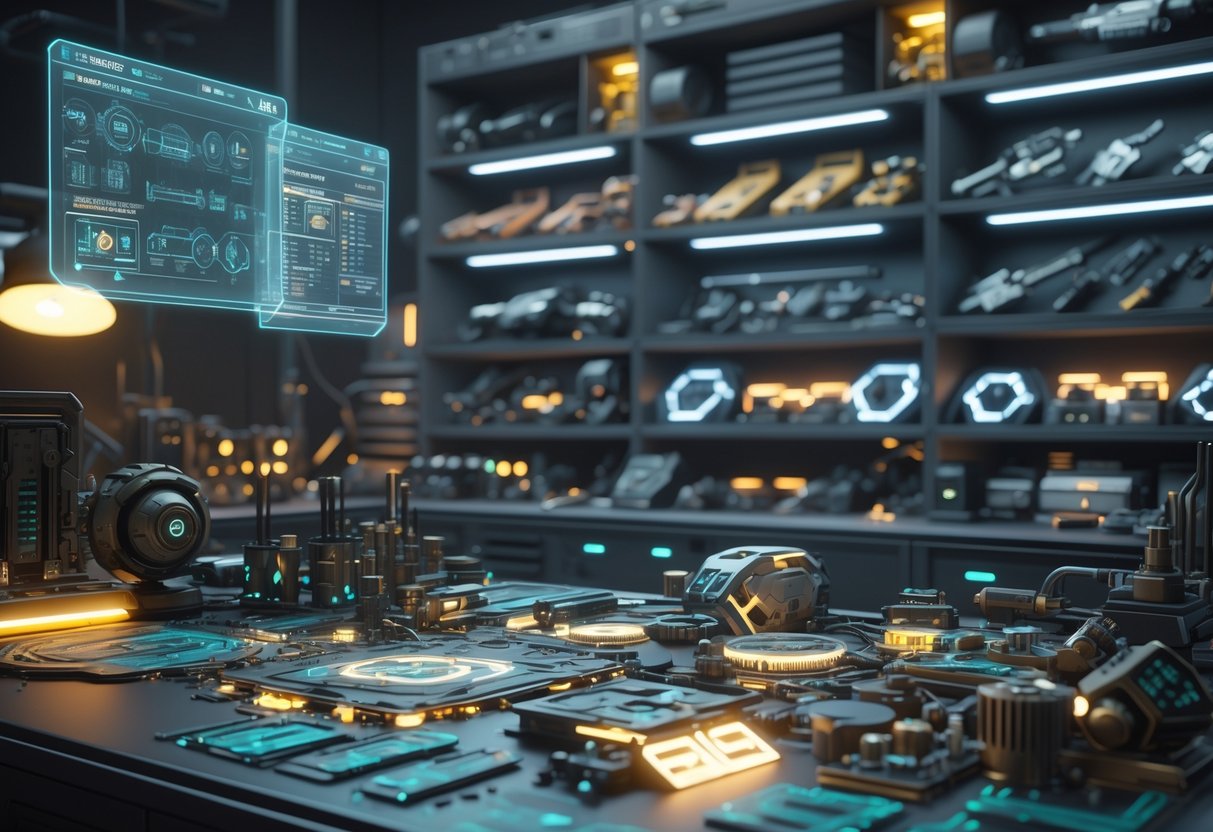
Building your own Deadlock setups lets you try out new ideas and see what fits your style. Online calculators make it easy to plan, and sandbox modes let you test without pressure.
Utilising Online Build Calculators
A bunch of websites offer build calculators so you can map out your items before hopping into a game. These tools show costs, paths, and total price for your builds.
Common features:
- Breakdowns by game phase
- Side-by-side build comparisons
- Share links for your team
- Export for in-game use
Sites like DeadlockTracker host community calculators. You can play with combos before spending any in-game currency.
Most let you save multiple builds per hero. Handy if you want different setups for different matches.
Quick tip: Make separate builds for farming, teamfighting, and late game carry.
Testing Builds in Game Modes
Hero Sandbox mode is the perfect spot to test your custom builds before you try them in real matches. You get unlimited souls and can buy whatever you want.
Jump in with your hero and mess around with item orders. See how they change your damage, survivability, and cooldowns.
Key things to test:
- Damage on dummies
- Movement speed with different boots
- Ability combos with new items
- How long you last against enemy skills
Practice your build timing too. Know which items to rush if you’re ahead or behind.
Some players make multiple versions—one for stomping, one for catching up. Test both in Sandbox.
Community Resources and Recommendations
The Deadlock community shares tons of public builds in the in-game browser. The best ones usually explain item picks and strategy.
Popular builds to try:
- “You are Literally Him: A Seven Guide”
- “7EUS, AOE God”
- High-rated builds from top players
Read the descriptions. Good builds explain why they picked each item and when to buy them.
Hop into Deadlock Discords or Reddit to talk builds. Veterans often share advanced tips and counter-builds.
Warning: Not every public build is good. Check the creator’s match history and ratings before copying.
Start with a solid community build, then tweak it to fit how you play.
Frequently Asked Questions
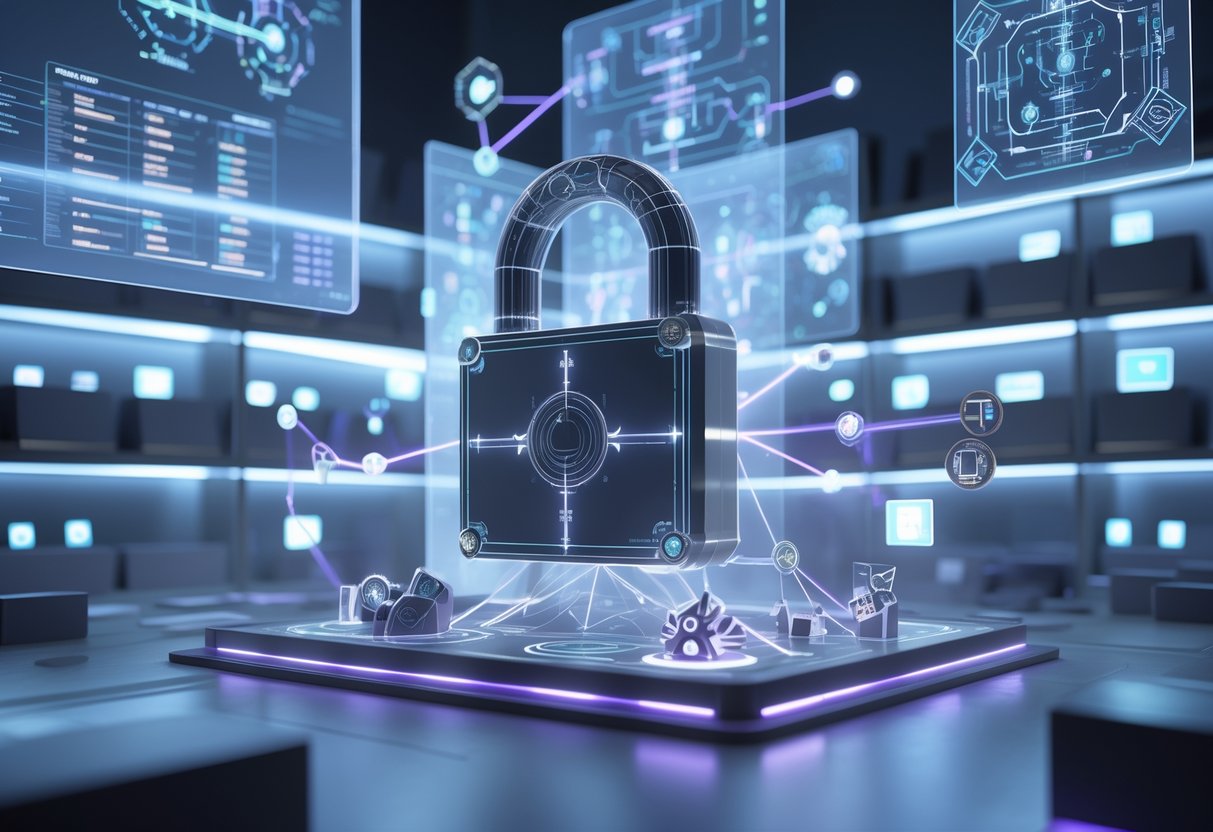
If you get the basics of item builds in Deadlock, you’ll dodge a lot of rookie mistakes that make your hero useless. Picking the right items, timing them, and adapting mid-game really matter.
What are the top strategies for optimising your item build to avoid deadlocks?
First, understand your hero’s scaling. Pocket, for example, only has 1.4 spirit scaling, while Talon’s arrow jumps from 1.6 up to 2.5 late game.
Match item picks to your hero’s strengths. Don’t force spirit items on heroes that don’t scale with spirit, even if they look like casters.
Plan your tiers early. Start with cheap Tier 1s for lane, then move to Tier 2 as team fights start.
Could you suggest some essential items to include in a build to prevent deadlocking?
Extra Charge is perfect for heroes like McGinness or Great Talon who burn through charges. You get double the critical abilities.
Mystic Burst works for heroes with big-damage abilities (over 80). It boosts both ability and weapon damage, so hybrids love it.
Ammo Scavenger is a lifesaver for heroes like Haze. It gives ammo back on orbs, nearly doubling your mag during heavy farm phases.
How does one’s choice of items impact the likelihood of encountering a deadlock in-game?
If you buy items that don’t scale, your power spikes just never show up. Spirit items on a low-scaling hero? You’ll fall way behind.
Bad defense picks leave you open. Bullet armor versus spirit-heavy teams wastes your gold.
Stick with Tier 1s too long and you’ll get steamrolled in team fights.
What are the best practices for modifying your item build mid-game to address potential deadlocks?
Watch what the enemy builds and react. If you see spirit stacking, pick up Improved Spirit Armour for that 45% resistance.
Think about your team’s needs. Sometimes, Debuff Reducer helps more than another damage item against CC-heavy teams.
Don’t hesitate to sell early items. That Basic Magazine isn’t helping you in late game.
Which items are known to synergise well together to reduce the chances of a game reaching a deadlock?
Active Reload and high-reload heroes like Haze go hand in hand. Instant reload and fire rate buffs set up big bursts.
Bullet Life Steal and Spirit Life Steal work together for sustain. You’ll heal up while fighting and stay on the map longer.
Combat Barrier and Enchanted Barrier both give shields and damage boosts. Use them early, then switch to resistance as the game goes on.
Can you explain the role of defensive versus offensive items in preventing deadlock situations?
Defensive items usually fall into two camps: resistance or shields.
Bullet and Spirit Armour boost your percentage resistance, and this stacks up as your health pool grows.
Combat and Enchanted Barriers jump in with instant shields, plus they throw in some bonus damage while they’re up.
You might want resistance if you’re in for a long fight. Shields, on the other hand, shine when you need to survive sudden bursts.
Getting the right mix really matters. If you go all-in on damage, you’ll probably get melted fast. But if you only stack defence, you won’t make much of a dent in fights.

